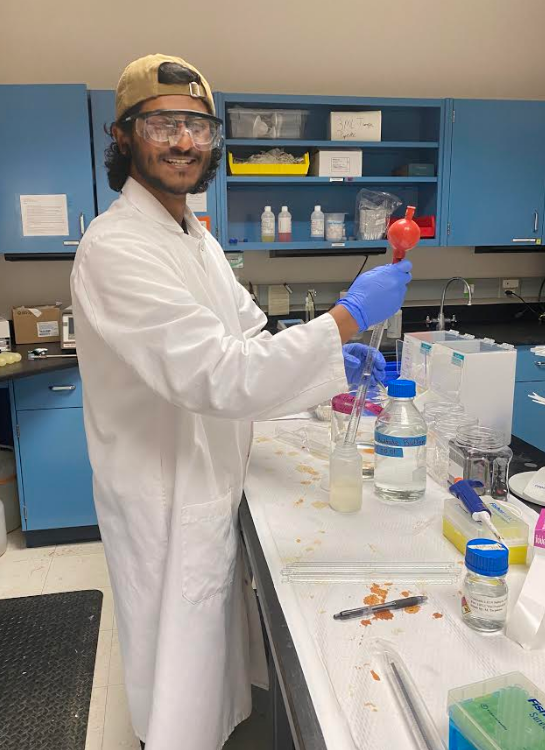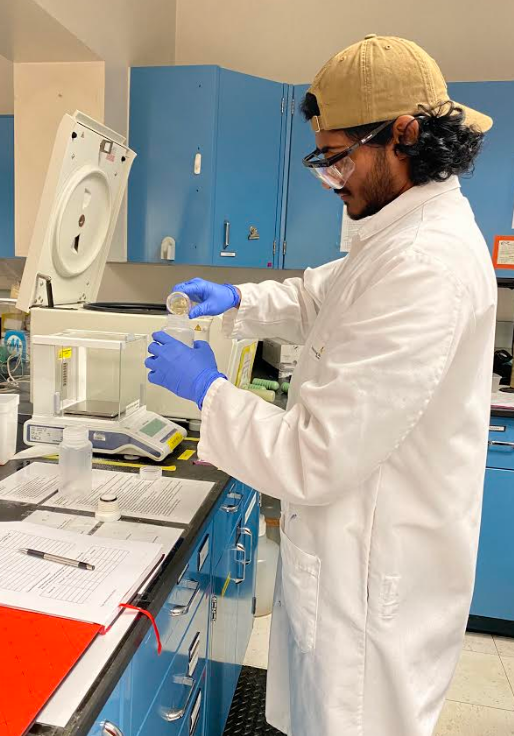Earth Day 2022: Turning Trash into Fuel of the Future
Posted April 22, 2022
For several years, NCERC has utilized a variety of bio-based feedstocks, such as corn stover, hemp, and orchard waste, to research the conversion of cellulosic material to sugars and then to ethanol. In 2021, the NCERC research team expanded its portfolio of feedstocks to include Municipal Solid Waste (MSW) through funding provided by SIUE’s STEP grant program. This project sparked the first non-agricultural waste research project and led to a nearly-year-long pursuit of converting MSW into ethanol. In April 2022, NCERC achieved what it set out to do. 
The United States’ population generated 292.4 million tons of MSW or 4.9 pounds per person per day in 2018 according to the US Environmental Protection Agency. Of the MSW generated, almost 94 million tons of MSW were recycled and composted, equivalent to a 32.1 percent recycling and composting rate, and an additional 17.7 million tons of food were managed by other methods. In November 2021, NCERC received a waste donation from a local provider of solid waste collection, transfer, recycling and disposal services who mostly serves exclusive and secondary markets across the US and Canada.
To fulfill the needs of the project, NCERC hired a student worker, Ajay Venigalla, to perform the day-to-day laboratory operations, including sorting the waste, processing samples, and generating data for the research team to review. After several months of hard work, here’s what we learned:
- There is about 60% of organic fraction in one representative sample of household trash, which could be potentially utilized for ethanol and coproduct production. The organic fraction can vary from house to house.
- Among the 60% organic fraction, there was about 42% cellulose, 7% starch, 11% xylan, and a low level of protein and fat (3-5%).
- From the lab scale trials we performed with low total solid loading, we are able to make around 50% conversion of all carbohydrates in MSW into monomers through room temperature pretreatment, which requires lower cost and energy than any of its kind processing from literature and commercializationcan. The sugars can be easily converted into ethanol using C5C6 yeast.
 While we’re excited about these results, and celebrating this milestone today on Earth Day 2022, we have a lot of work left to do to prepare these processing conditions for commercial use through collaboraitoins with academia and industry. This data will be used to pursue additional grant funding, including two concept papers which were recently submitted to the Department of Energy’s Bioenergy Technology Office. We hope to hear about those soon, and plan to submit full proposals in July 2022.
While we’re excited about these results, and celebrating this milestone today on Earth Day 2022, we have a lot of work left to do to prepare these processing conditions for commercial use through collaboraitoins with academia and industry. This data will be used to pursue additional grant funding, including two concept papers which were recently submitted to the Department of Energy’s Bioenergy Technology Office. We hope to hear about those soon, and plan to submit full proposals in July 2022.
Additional plans include scaling up the processing conditions from 1 L to 100 L, including developing innovative ways to increase the mixing in order to increase the sugar yield and ethanol yield. A critical part of preparing this project for commercialization is performing Techno Economic Analysis (TCA) and Lifecycle Analysis (LCA) so that we can demonstrate the value of this research beyond the scientific discovery, as we anticipate that it will also boast significant economic and environmental benefits. Lastly, we’re excited to engage with Sustainable Aviation Fuel (SAF) researchers and producers about the cellulosic ethanol research being performed at NCERC, because this research will directly impact on lowering carbon scores when making SAF.
Happy Earth Day!










